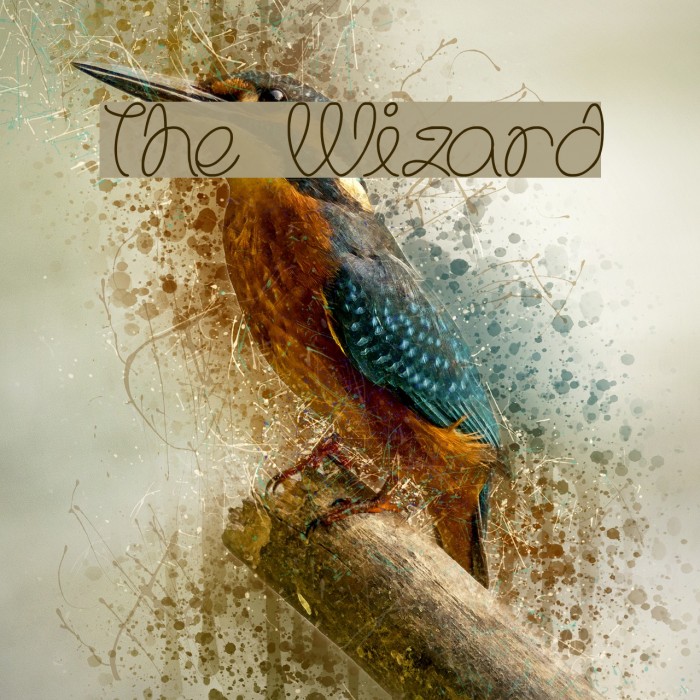
- #FONT WIZARD APP SOFTWARE#
- #FONT WIZARD APP SERIES#
- #FONT WIZARD APP DOWNLOAD#
- #FONT WIZARD APP FREE#
#FONT WIZARD APP SOFTWARE#
The flexibility of software has enabled extensive font revivals and historic homages such as Adobe Garamond from Robert Slimbach and The Proteus Project from Jonathan Hoefler. During this time, typographers such as Zuzana Licko and Barry Deck created innovative typefaces with the assistance of new software tools. It printed every letter differently so that each time an A is printed, for example, it will have a different shape. The only limitations are in our expectations.” 1 LettError expanded the possibilities of typography with their typeface Beowolf (p. The Dutch typographers known as LettError explain, “The industrial methods of producing typography meant that all letters had to be identical… Typography is now produced with sophisticated equipment that doesn't impose such rules. Digital typefaces are software, and the old rules of metal and photo type no longer apply. The proliferation of personal computers in the mid-1980s spawned a period of rapid typographic experimentation. These anti-aliasing techniques use gray pixels at the edge of characters to compensate for low screen resolution. In the meantime, methods to smooth text on screen were introduced. More recently, these technologies were merged into the OpenType format. Apple and Microsoft later developed TrueType, another outline font format. This allowed type on screen to scale to large sizes and still look smooth. When the LaserWriter printer was introduced in 1985, Postscript technology defined fonts with a mathematical description of each character's outline. For example, the character A in the San Francisco typeface used a different image to display the character at size 12 and 18. Using this technology, a variation of each font was designed for each size of a particular typeface.

The fonts on the earliest Apple Macintosh computers comprised small bitmap images created at specific sizes like 10, 12, and 24 points. Because, historically, screens have a low resolution in comparison to paper, techniques have been developed to enhance the appearance of type on screen. The quality of the typography is constrained by the resolution of the screen. Letters on screen are created by setting the color of pixels. Text from emails, websites, and instant messages fill computer screens, and while many of the typographic rules of the past apply, type on screen requires additional considerations for enhanced communication and legibility. In the digital era, the way we consume text has changed drastically since the proliferation of personal computers in the 1980s and the rapid growth of the Internet in the 1990s. Automated typesetting machines, such as the Linotype invented in the nineteenth century, changed the way information was produced, distributed, and consumed. Early printing techniques developed by Johannes Gutenberg in fifteenth-century Germany using letters cast from lead provided a catalyst for increased literacy and the scientific revolution. The evolution of typographic reproduction and display technologies has and continues to impact human culture.

If you see any errors or have comments, please let us know.
#FONT WIZARD APP FREE#
Note that these free fonts may be not professionally designed or with an incomplete character set, but they are Ok for personal projects or fun purposes.This tutorial is the Typography chapter from Processing: A Programming Handbook for Visual Designers and Artists, Second Edition, published by MIT Press.
#FONT WIZARD APP DOWNLOAD#
You can follow the links to download them for free. For the book title, you can use Harry P by Phoenix Phonts instead For chapter titles, Lumos is also pretty similar and for the Hagrid lettering, a font called Hagrid was created to imitate the lettering. All mentioned above are commercial fonts and you can follow the links and purchase them.īut there are free alternatives to them. For the handwriting of Rubeus Hagrid, it resembles Felt Tip Roman by Mark Simonson. As for the chapter titles and page numbers, a font called Able by Marcus Burlile resembles their lettering. The lettering used for the book title is very similar to a typeface called Hocus Pocus, which comes in four styles and each with a complete character set. The book tells the adventure story of young wizard Harry Potter with his friends at witchcraft and wizardry school.ĭifferent fonts were used on the Harry Potter book covers, for its chapter title and elsewhere.
#FONT WIZARD APP SERIES#
Harry Potter is a novel series written by the British author J.


 0 kommentar(er)
0 kommentar(er)
